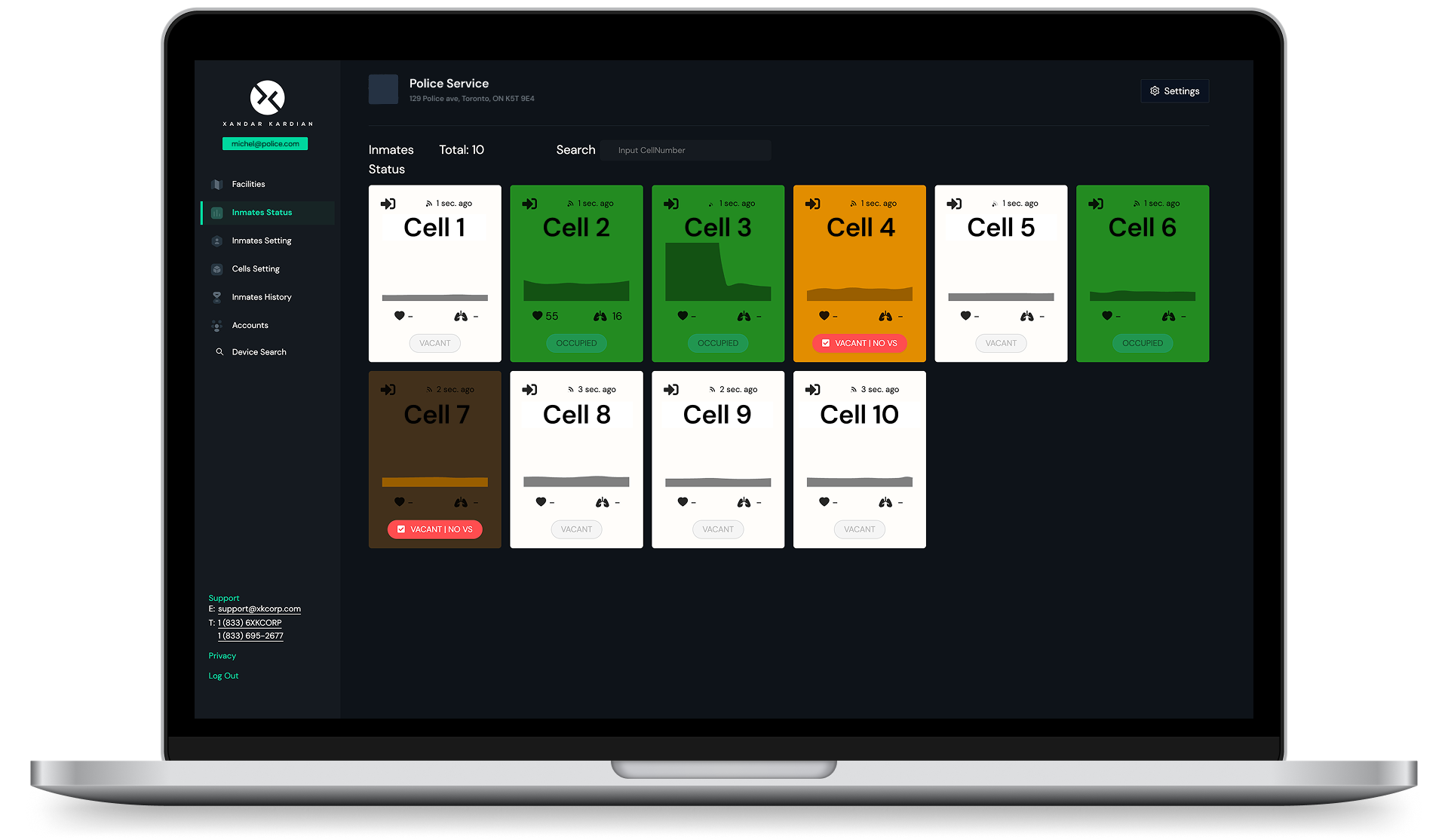Radar-Based Vital Sign Sensor Saves the Life of At-Risk Inmate
Learn how the Xandar Kardian XK300 device enabled a rapid-response health intervention in a Hong Kong Correctional Facility.
Read the ArticleEvery year, thousands of inmates die while incarcerated. ~40% of these deaths are the result of cardiovascular or respiratory illness, overdose, detox or suicide.1 The challenges are urgent and pervasive — but they’re not inevitable. Discover how autonomous, radar-based vital signs monitoring can help you protect your inmates’ safety while prioritizing privacy, security and your staff’s wellbeing.

Identify vital sign changes to help support earlier intervention and better outcomes.
See How
Help protect the privacy and security of your inmates, your staff and your network.
See How
Provide timely alerts and extra support so your staff can focus where the need is greatest.
See How
Traditional patient monitors (e.g., ECG or telemetry) can require significant user compliance, making them difficult to implement in general correctional environments. Contact-free, continuous, radar-based monitoring can accurately monitor heart rate, respiratory rate and more — no staff intervention or inmate compliance required. And since it can sense through blankets, clothing, furniture and even drywall, it can be used in traditionally hard-to-monitor spaces. With thousands of measurements per day, you can:
Read how Xandar Kardian sensors detected rapid deterioration and helped save a life at Hong Kong Correctional Facility.
Read How

No wearables. No cameras. No microphones. No inmate compliance or staff intervention required. With autonomous, radar-based monitoring, the process is automatic and private — and it takes place on a secure local network that is straightforward to deploy.
An Australian facility installed Xandar Kardian sensors within tamper-proof light fixtures, and on a secure local network.


Serious health events are not limited to patrol times. Give your staff the support they need to identify inmates at risk, even when no one is there to inform them.
An Australian facility uses XK300 sensors and a simple dashboard to monitor inmates’ vital signs and spot potential issues.


Our goal is to enable timely healthcare intervention. Making the vital sign information of these inmates immediately available and constantly updated for prison staff, without any extra work on their part, is an ideal solution in busy facilities. It’s a significant step towards guaranteeing inmate safety.
Co-founder and Chief Executive Officer, Xandar Kardian Inc.

Learn how the Xandar Kardian XK300 device enabled a rapid-response health intervention in a Hong Kong Correctional Facility.
Read the Article
The XK300 uses radar monitoring to track heart rate, respiratory rate, motion and presence. In fact, it is the first commercially available medical device cleared by the FDA to do so. Our radar can sense through blankets, clothing, furniture and even drywall to detect micro vibrations from the body – safely. Discover how it can make a difference for your inmates and staff.
Learn MoreReady to see the impact autonomous, contact-free, continuous monitoring could have on your organization? Let’s get started.
Schedule a DemoReferences
1Office of Justice Programs, & Carson, E. A., NCJ Mortality in State and Federal Prisons, 2001–2019 – Statistical Tables (2021). Washington, DC; Bureau of Justice Statistics.